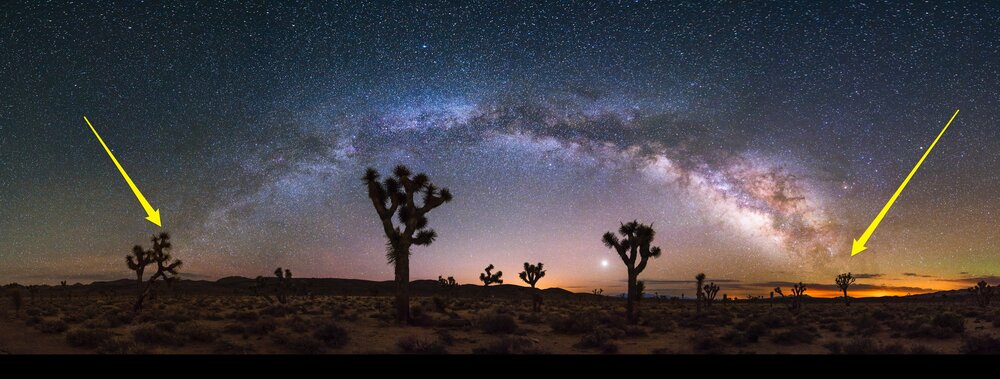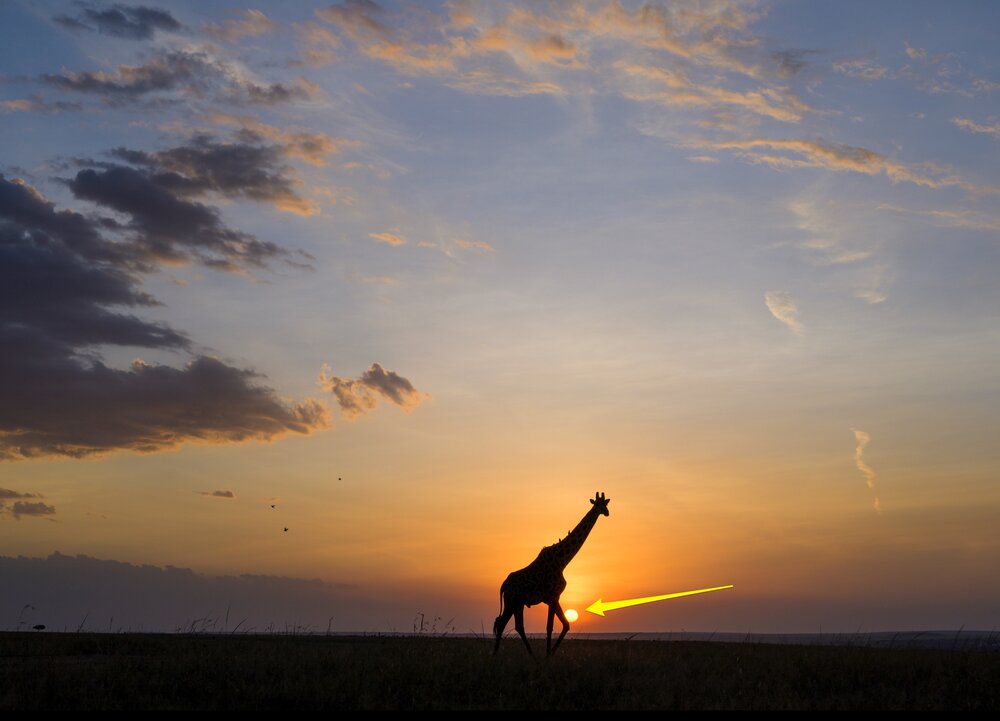In photography parlance, a tangency is when two objects or compositional elements come so close they almost touch, do touch, or barely overlap. The juncture of the two elements is the tangency. Tangencies draw the viewer’s eye, so the key is to place them where drawing the eye to one object (or distracting it from another) is the desired effect. The classic compositional rules tell us this sort of tangent is to be avoided, but rules are made to be broken, and there are times when tangencies can be used intentionally.
How can you create an intentional tangency to draw the reader’s eye? There are no one-size-fits-all guidelines. Here are some times that a tangency is useful for drawing the eye:

The blue light from the Eiffel tower intersects a building in the distance, drawing the eye to the repetitions in form.

The trees positioned over the ends of the Milky Way underscore the full extent of the arc.

The intersection of the giraffe and the sunset lead the viewer’s eye to the most important subjects.
Get creative with some intentional tangencies this week! Comments on the ways in which you think your tangency strengthens or influences your image are appreciated. Our pros will be waiting on our Muench University Facebook Page with helpful comments and critiques.
View Post on Original Blog
https://muenchworkshops.com/blog/assignment-10-intentional-tangents
